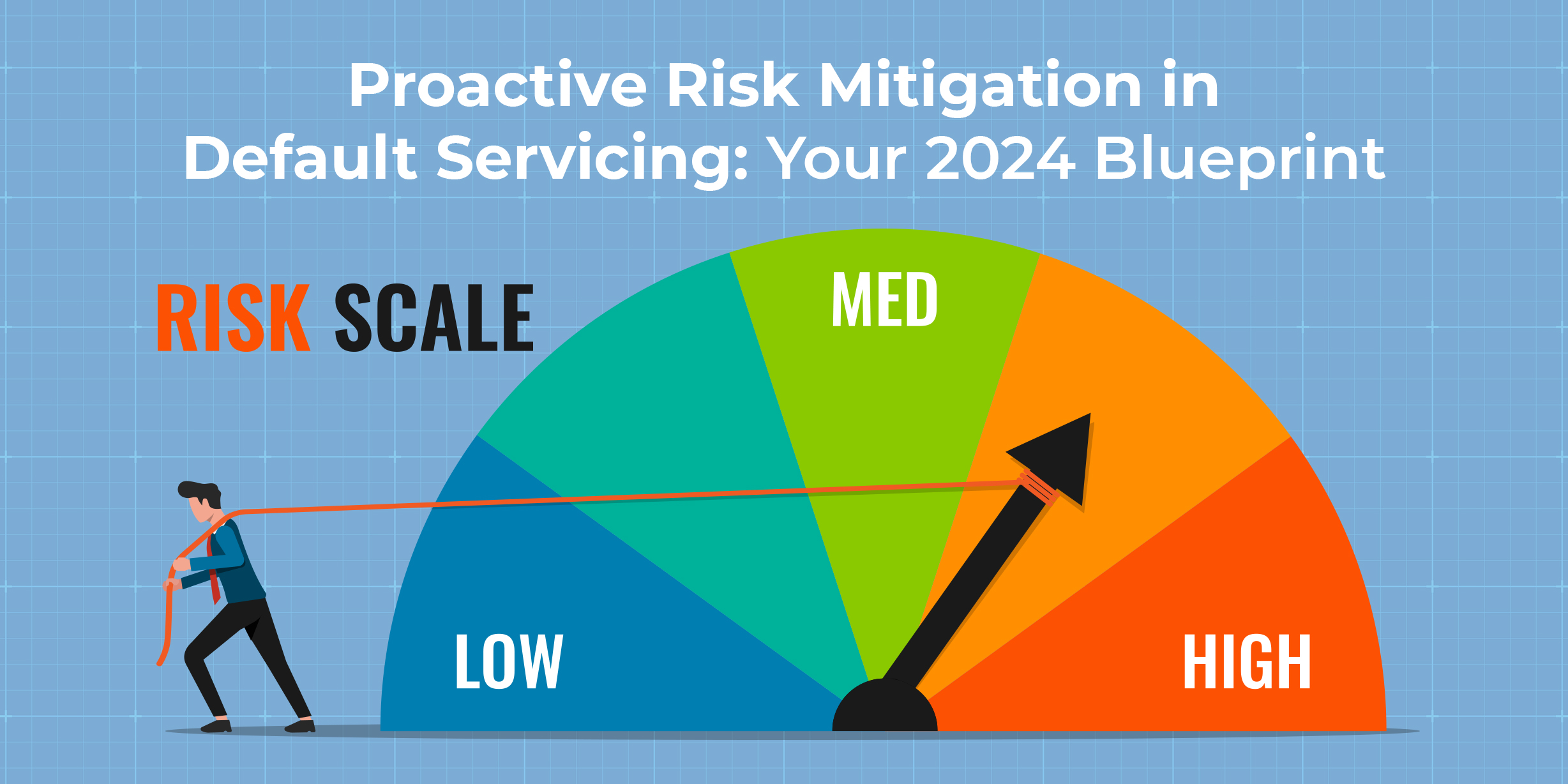2023 saw a significant increase in delinquency rates, with commercial mortgage delinquency, in particular, rising in December for the third month in a row. Changes in property market fundamentals and shifts in home buying patterns have resulted in the continued risk of high default rates in 2024. As a result, lenders must invest in proactive risk management in the servicing stage to manage their bottom line.
Read More: 7 Factors to Consider When Choosing a Risk Management Platform
Bear in mind that rising origination costs and staffing expenses are already adding to mortgage risks. Without proactive risk management, default servicing scenarios risk ending in foreclosures, which, in a strained property market with high interest rates, can be cumbersome for lenders to navigate. For this reason, proactive steps combined with mortgage quality control from the offset are crucial for maintaining sustainable levels of risk and profitability. Some of the strategies to achieve this include:
1. Strengthening mortgage quality control
Mortgage quality control is the first and most important bulwark against default risks. With rigorous background checks, complete documentation, and an error-free approval workflow in place, you can minimize the risk of poor-quality undertakings and minimize risk exposure.
Most of the activities involved in mortgage quality control will occur at the loan’s beginning of life stage. Despite the increased preference for digitization and chatbots among young home buyers, reliance on paper documentation continues to be high in 2024. A robust mortgage quality control function will bridge the gap between legacy and digital information assets through technologies like OCR, automated document management, and centralized audits.
Ongoing mortgage quality control throughout the life of the loan involves monitoring escrow levels, following up on additional payments, and issuing refunds, while maintaining an audit trail and tracking the end-to-end process. This could substantially mitigate the risks in default servicing by ensuring proper compliance and hygiene throughout the loan lifecycle.
2. Leveraging cutting-edge default risk prediction models
Proactive risk management, to a great extent, relies on the accuracy of how you determine default risks. For commercial real estate (CRE) this could mean leveraging credit ratings issued by Standard & Poor’s (S&P), Moody’s, and Fitch Ratings. For individual consumers, FICO credit scores may be taken into account. However, in a dynamic business environment marked by economic volatility, such lagging indicators may not be enough.
Highly conservative models may exclude certain consumer segments from mortgage eligibility, such as those with non-traditional income sources. The same applies to small businesses applying for CRE loans. In contrast, artificial intelligence and machine learning have a greater potential to process unstructured, multivariate data to surface more accurate predictions.
For example, IMF’s 2022 analysis of mortgage probabilities of default (PDs) and loss given default (LGDs) relies on an advanced micro-macro simulation model. Also, Fannie Mae estimates that the use of AI/ML in mortgage has increased from 42% in 2018 to 73% in 2023. Of course, the use of such cutting-edge models in proactive risk management deserves additional scrutiny, especially for bias, but remains an essential lever for measuring defiant risks in 2024.
Read More: How to Mitigate Risks Affecting Your Mortgage Operations
3. Overhauling loan modification solutions
Appropriate loan modification solutions can be immensely helpful in default servicing, allowing servicers to preserve their customers’ properties, wherever possible. A timely modification such as an extension of the length of time for repayment or switching to a different type of loan may provide relief to borrowers and enable proactive risk management for lenders by preventing foreclosure scenarios.
However, the ability to manage loan modification requests smartly and efficiently often requires a systems overhaul. Lenders need the ability to integrate servicing data, automate the ordering and fulfillment process, monitor liens against losses, and provide borrowers with flexible signing solutions, such as mobile notary.
In 2024, as origination volumes slowly increase, a streamlined loan modification solution can help you manage risks in the servicing process. It will allow lenders to accommodate greater volumes while minimizing risk, comply with changing regulations, and adapt to any flux in interest rates while improving the borrower experience.
4. Emphasizing self-service
As lenders take on an unprecedented degree of risk in today’s economy, the power of self-service to engage with borrowers cannot be overstated. Today, individual borrowers and businesses may face a variety of financial stressors influencing their ability to make payments, from natural disasters and climate change to economic disparities in different parts of the country. Self-service allows borrowers to participate in proactive risk management by reaching out to lenders in their times of need.
Self-service channels are a convenient way for borrowers to request more convenient repayment plans, Federal Housing Administration (FHA) partial claims, Government Sponsored Enterprise (GSE) payment deferrals, and, as previously explained, loan modifications. The ability to reach out to lenders on time, may stave off a default scenario altogether and reduce the reliance on third-party collections.
Read More: How to Mitigate Risks in Default Servicing?
At Nexval, we recognize the close relationship between the US mortgage industry and the country’s economy as a whole. Therefore, proactive risk management in default servicing is not just important for the business bottom line but can help maintain individual financial well-being, business continuity, and economic stability. Our technology and outsourcing solutions help make the servicing process more efficient and agile by empowering borrowers and lenders with the tools they need to avoid negative outcomes.
Speak with our tech experts to know more.


